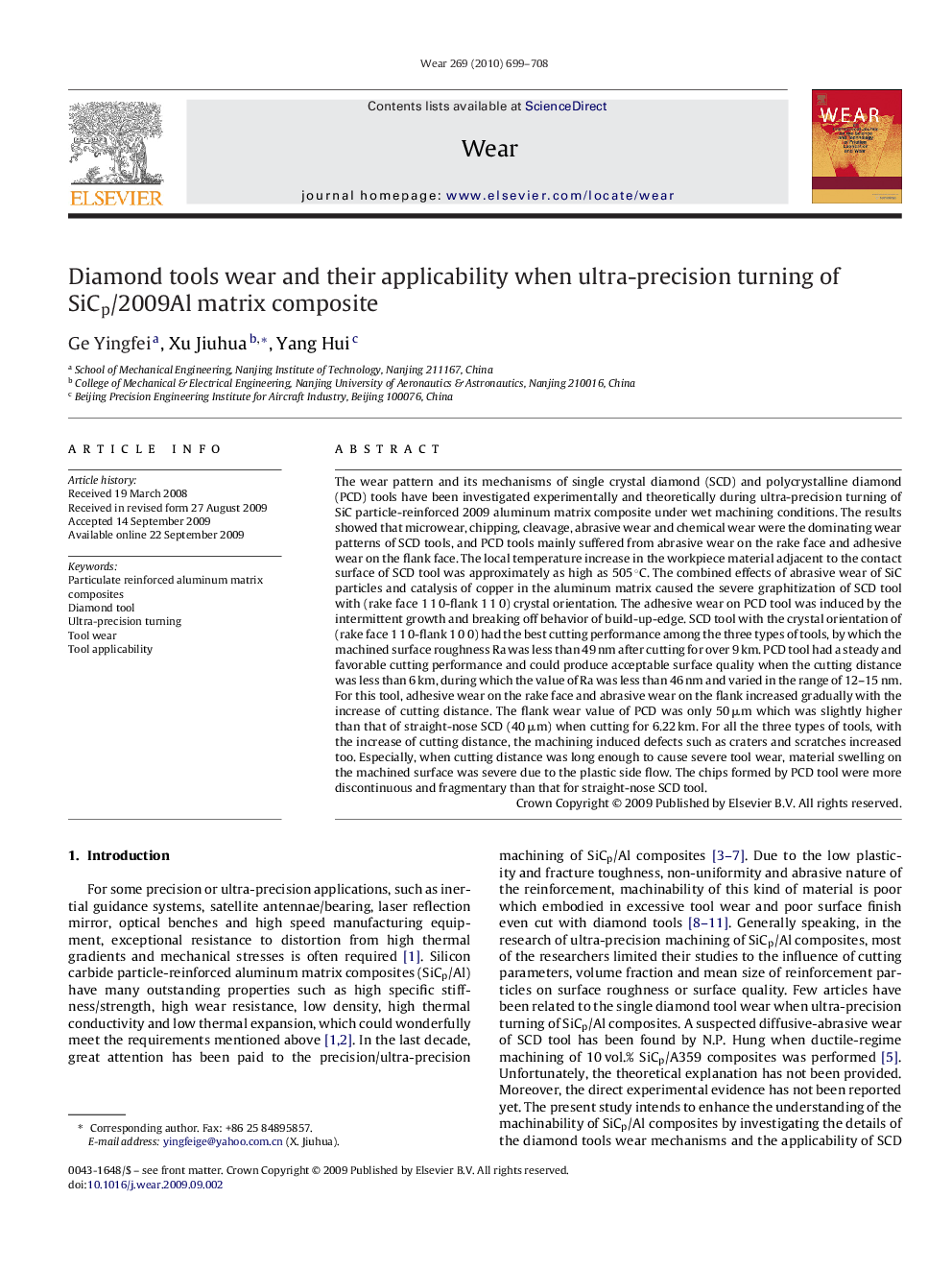| کد مقاله | کد نشریه | سال انتشار | مقاله انگلیسی | نسخه تمام متن |
|---|---|---|---|---|
| 618483 | 1455030 | 2010 | 10 صفحه PDF | دانلود رایگان |
عنوان انگلیسی مقاله ISI
Diamond tools wear and their applicability when ultra-precision turning of SiCp/2009Al matrix composite
دانلود مقاله + سفارش ترجمه
دانلود مقاله ISI انگلیسی
رایگان برای ایرانیان
کلمات کلیدی
موضوعات مرتبط
مهندسی و علوم پایه
مهندسی شیمی
شیمی کلوئیدی و سطحی
پیش نمایش صفحه اول مقاله

چکیده انگلیسی
The wear pattern and its mechanisms of single crystal diamond (SCD) and polycrystalline diamond (PCD) tools have been investigated experimentally and theoretically during ultra-precision turning of SiC particle-reinforced 2009 aluminum matrix composite under wet machining conditions. The results showed that microwear, chipping, cleavage, abrasive wear and chemical wear were the dominating wear patterns of SCD tools, and PCD tools mainly suffered from abrasive wear on the rake face and adhesive wear on the flank face. The local temperature increase in the workpiece material adjacent to the contact surface of SCD tool was approximately as high as 505 °C. The combined effects of abrasive wear of SiC particles and catalysis of copper in the aluminum matrix caused the severe graphitization of SCD tool with (rake face 1 1 0-flank 1 1 0) crystal orientation. The adhesive wear on PCD tool was induced by the intermittent growth and breaking off behavior of build-up-edge. SCD tool with the crystal orientation of (rake face 1 1 0-flank 1 0 0) had the best cutting performance among the three types of tools, by which the machined surface roughness Ra was less than 49 nm after cutting for over 9 km. PCD tool had a steady and favorable cutting performance and could produce acceptable surface quality when the cutting distance was less than 6 km, during which the value of Ra was less than 46 nm and varied in the range of 12-15 nm. For this tool, adhesive wear on the rake face and abrasive wear on the flank increased gradually with the increase of cutting distance. The flank wear value of PCD was only 50 μm which was slightly higher than that of straight-nose SCD (40 μm) when cutting for 6.22 km. For all the three types of tools, with the increase of cutting distance, the machining induced defects such as craters and scratches increased too. Especially, when cutting distance was long enough to cause severe tool wear, material swelling on the machined surface was severe due to the plastic side flow. The chips formed by PCD tool were more discontinuous and fragmentary than that for straight-nose SCD tool.
ناشر
Database: Elsevier - ScienceDirect (ساینس دایرکت)
Journal: Wear - Volume 269, Issues 11â12, 28 October 2010, Pages 699-708
Journal: Wear - Volume 269, Issues 11â12, 28 October 2010, Pages 699-708
نویسندگان
Ge Yingfei, Xu Jiuhua, Yang Hui,